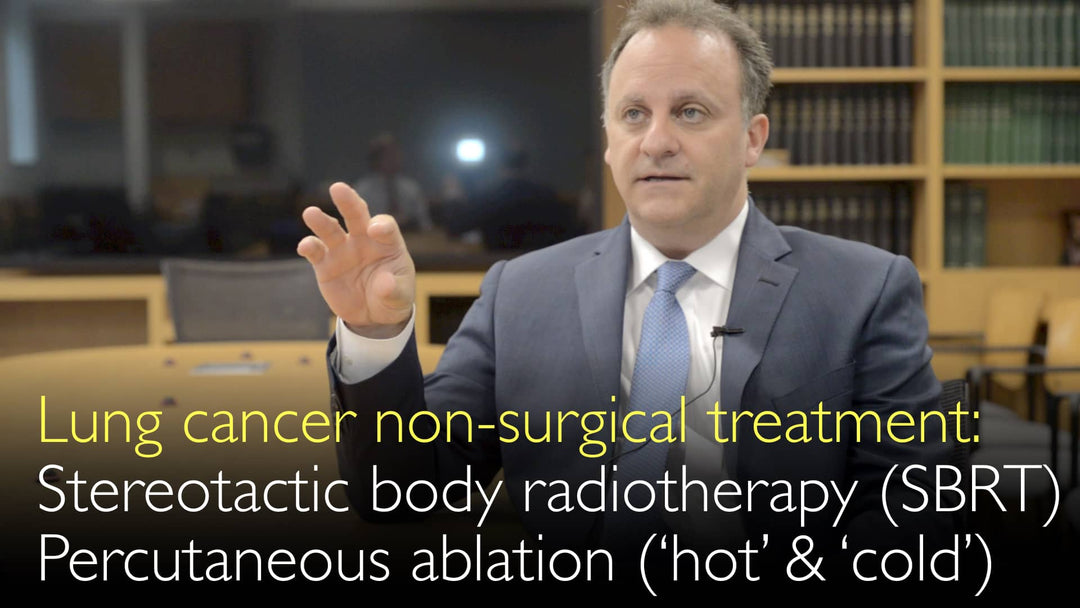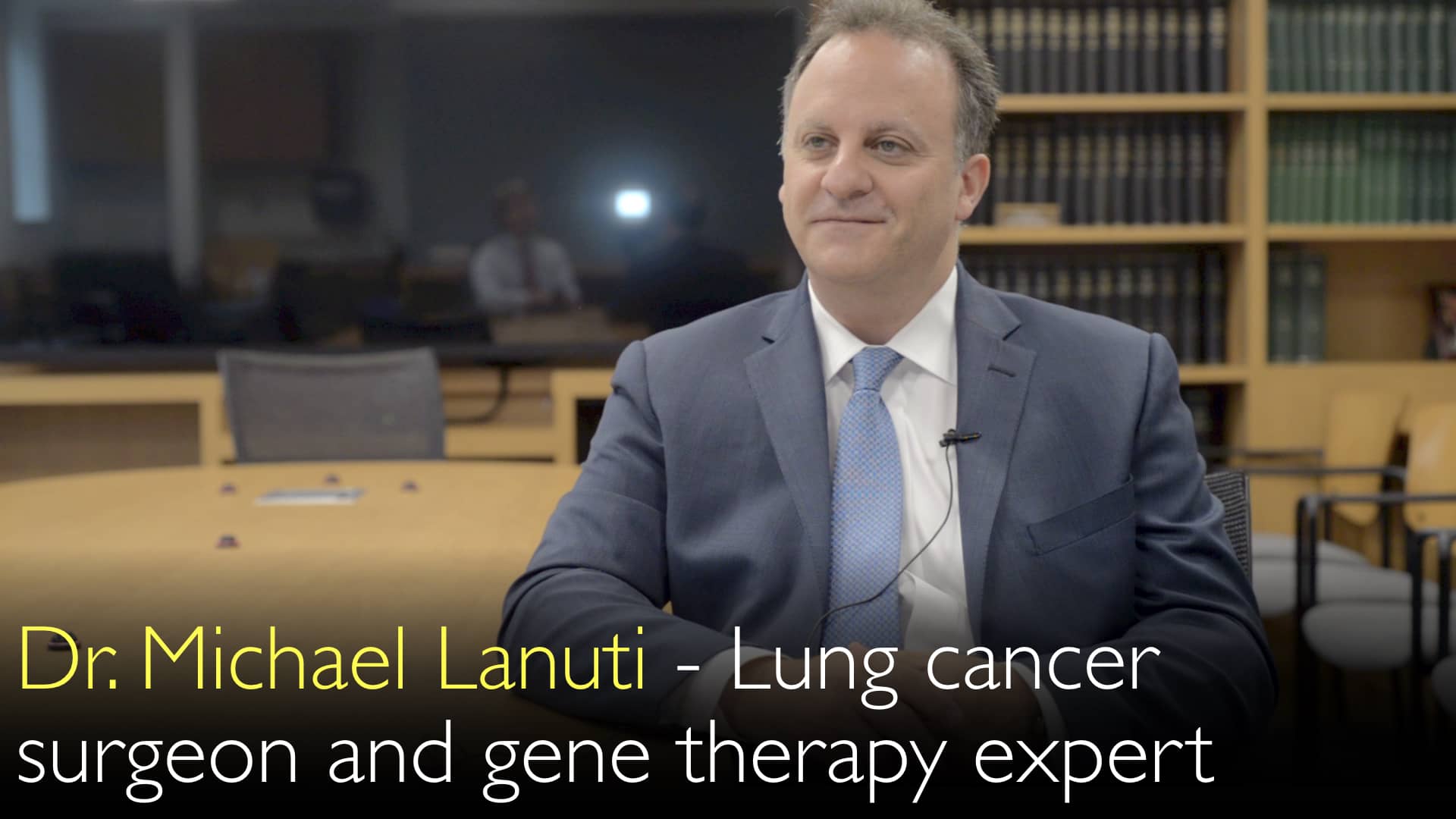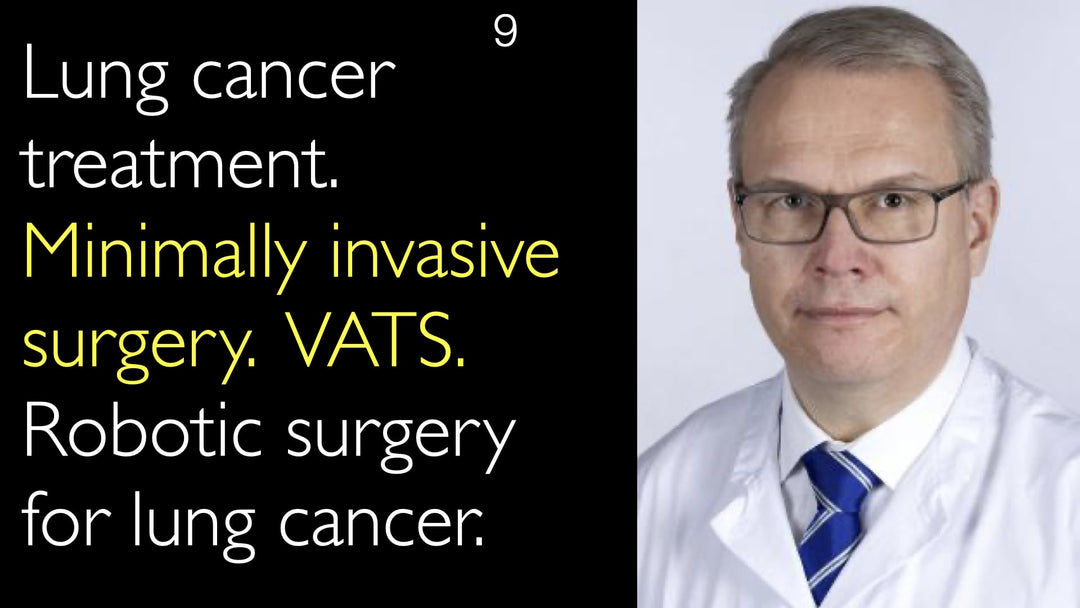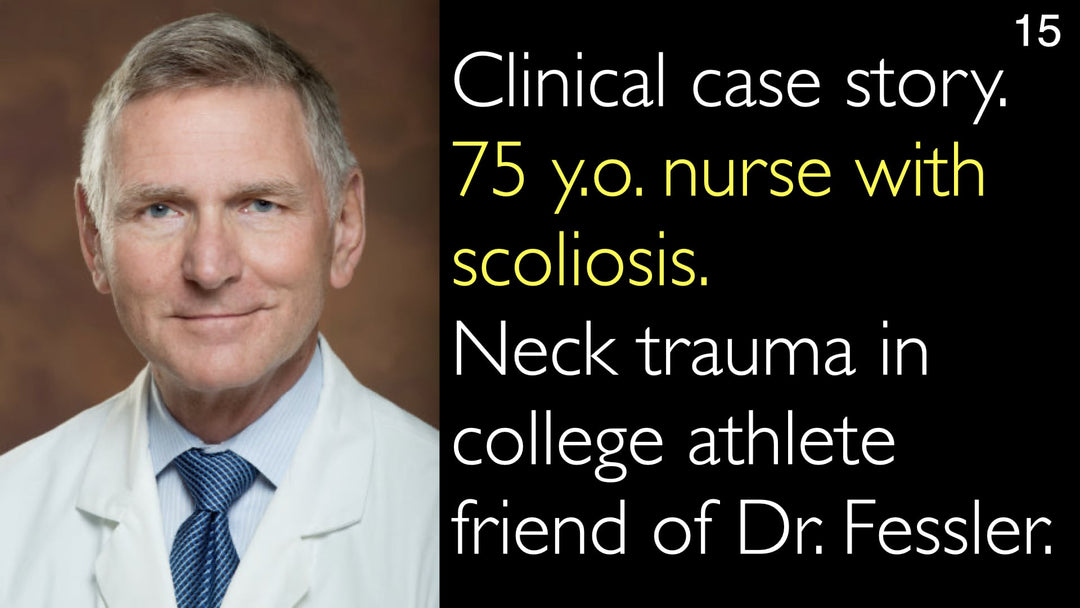Leading expert in thoracic surgery and lung cancer treatment, Dr. Michael Lanuti, MD, explains how stereotactic body radiotherapy (SBRT) and percutaneous ablation techniques offer effective non-surgical options for patients with early-stage lung cancer who are not candidates for surgery due to age, poor lung function, or other medical comorbidities, achieving local control rates of 85-90%.
Advanced Non-Surgical Treatments for Early-Stage Lung Cancer
Jump To Section
- SBRT Lung Cancer Treatment
- Percutaneous Thermal Ablation
- Radiofrequency vs Cryoablation
- Ideal Tumor Size & Location
- Surgery Remains Gold Standard
- Patient Selection Criteria
- Treatment Success Rates
SBRT Lung Cancer Treatment
Stereotactic body radiotherapy (SBRT) has become a very common and effective treatment for elderly patients with early-stage lung cancer. Dr. Michael Lanuti, MD, emphasizes that SBRT offers excellent local treatment responses, typically in the 85% to 90% range. This non-invasive radiation technique delivers highly focused, intense doses of radiation to the tumor while minimizing exposure to surrounding healthy lung tissue.
It is particularly valuable for patients who cannot tolerate a surgical procedure due to compromised cardiopulmonary reserve or other significant health issues.
Percutaneous Thermal Ablation
Percutaneous ablation with thermal techniques provides another powerful local therapy option for inoperable lung tumors. Dr. Michael Lanuti, MD, describes these as "hot or cold" lung cancer therapy methods. These minimally invasive procedures involve inserting a probe directly into the tumor through the skin, guided by CT or ultrasound imaging.
Thermal ablation technology is continuously evolving and improving, allowing physicians to treat increasingly larger tumors effectively in a single session, offering a crucial alternative for nonsurgical candidates.
Radiofrequency vs Cryoablation
The choice between "hot" radiofrequency ablation and "cold" cryoablation depends heavily on the tumor's specific location. Dr. Michael Lanuti, MD, explains that radiofrequency ablation (RFA) uses heat to destroy cancer cells and is suitable for tumors on the very edge of the lung.
Conversely, cryoablation freezes the tumor and is preferred when the lesion is close to intercostal nerves under the ribs. Using cryotherapy in these sensitive areas results in less neuralgia or nerve trouble post-procedure, preventing a painful syndrome in the patient's back.
Ideal Tumor Size & Location
The effectiveness of percutaneous ablation is closely tied to the lung tumor's size and anatomical position. According to Dr. Lanuti, radiofrequency ablation is most effective for tumors that are 3 centimeters or less in diameter. Larger tumors often have higher failure rates with ablation therapy.
However, he notes that microwave ablation probes can sometimes be used to effectively burn larger cancerous lesions. Tumor location is equally critical, as peripheral tumors are generally more accessible and safer to treat with these localized techniques than central tumors near major airways or blood vessels.
Surgery Remains Gold Standard
Despite the advances in non-surgical options, lung cancer surgery remains the gold standard for treatment when possible. Dr. Michael Lanuti, MD, is very clear that surgical resection is the first choice for achieving a cure in eligible patients. The decision to pursue ablation or SBRT is made in the absence of a viable surgery option.
Dr. Anton Titov, MD, and Dr. Lanuti confirm that if a patient is a good surgical candidate with low operative risks, surgery is strongly recommended as the most definitive treatment.
Patient Selection Criteria
Selecting the right patient for each local therapy requires careful evaluation by a multidisciplinary team. These treatments are primarily for patients who are too elderly, have insufficient lung function, or lack the cardiopulmonary reserve to withstand a major operation. Some patients, as Dr. Lanuti points out, may have already received radiation near the tumor site, making SBRT unsuitable and thus making ablation a better alternative.
Even patients who are surgical candidates but choose not to have an operation can be considered for these localized treatments, though surgery is still considered superior for a potential cure.
Treatment Success Rates
The success of non-surgical local therapies is measured by their high rates of local control and tumor response. Dr. Michael Lanuti, MD, cites impressive local treatment responses in the 85% to 90% range for stereotactic body radiotherapy. These outcomes make SBRT and ablation compelling options for a specific patient population that would otherwise have limited curative choices.
These techniques provide a one-time treatment option that can effectively destroy the primary tumor, offering a chance for long-term control and improved quality of life for nonsurgical patients.
Full Transcript
Dr. Michael Lanuti, MD: Non-surgical treatment of lung cancer includes stereotactic body radiotherapy (SBRT) and percutaneous ablation ("hot" and "cold"). Some lung cancer patients are too weak or old for surgery. Then new breakthrough lung cancer therapy is indicated.
Lung cancer is treated by surgical resection when possible. Lung cancer surgery is done by open surgery method and minimally invasive method. But other local therapy options are available for lung tumor treatment. One is radiofrequency ablation of lung tumors. There's also cryoablation of lung tumors.
Dr. Anton Titov, MD: What can you say about local therapy options for lung cancer patients?
Dr. Michael Lanuti, MD: Yes, those are interesting parts of lung cancer treatment. Sometimes a patient is too elderly. Sometimes a lung cancer patient doesn't have enough lung function or enough cardiopulmonary reserve. Then those lung cancer patients might benefit from non-surgical treatment options.
If they have an early stage lung cancer, we have other lung cancer treatment methods. The other lung adenocarcinoma therapy methods are radiation therapy. It is stereotactic body radiotherapy. The term is SBRT. That now is very common for elderly patients with lung cancer.
Stereotactic body radiotherapy is a good treatment option with local treatment responses in the 85% to 90% range. Other lung cancer therapy options include radiofrequency ablation of lung tumors. The term that we like to use is percutaneous ablation with thermal techniques. So we can do hot or cold lung cancer therapy.
Sometimes there's a lung tumor that's small. Some lung cancers are on the periphery of the lung. You wanted a one-time treatment option for lung cancer. Sometimes the patient is not a candidate for radiation. Some lung cancer patients were already radiated somewhere else in proximity to lung tumor.
These tumor ablation techniques are quite good. Sometimes lung tumors are greater than 3 centimeters. They often fail cancer therapy more. But we can burn larger lung cancer tumor with a microwave probe in a single treatment.
We can do radiofrequency ablation of lung tumor located close to the very edge of the lung. Then we use cold radiofrequency ablation cryotherapy. So we don't create a pain syndrome on the back. Because lung tumors can be close to the intercostal nerves.
These nerves supply under the ribs. Intercostal nerves is how your skin is innervated. So that's when we use cryotherapy to treat lung cancer. We see less neuralgia or nerve trouble. So thermal ablation of lung tumors technology is evolving. It's getting better for bigger lung tumors.
But radiofrequency ablation is only good for lung tumors that are 3 centimeters or less. And then somebody has a lung tumor that is 3 centimeters or less. What is the question of having this localized treatment like cryoablation or radiofrequency percutaneous ablation?
Dr. Anton Titov, MD: Is it the choice for the faster recovery with similar results compared with an open surgical operation? Or is it mostly the question of whether the patient can really tolerate surgery from the general medical standpoint?
Dr. Michael Lanuti, MD: Yeah, so it's a good question. I think that we would choose radiofrequency percutaneous ablation in the absence of surgery option. Lung cancer surgery remains the standard of care. It is the gold standard of treating lung cancer.
Sometimes someone was eligible for surgery where we thought the risks were low. Then we would push surgery first. There are lung cancer patients that choose not to have surgery. But they are good surgical candidates. Then radiofrequency percutaneous ablation make sense. But still surgery would be the best cancer therapy for cure of lung cancer.
Dr. Anton Titov, MD: So surgery is the first choice for lung cancer treatment. It is the gold standard if patients can tolerate surgery.
Dr. Michael Lanuti, MD: Yes.








